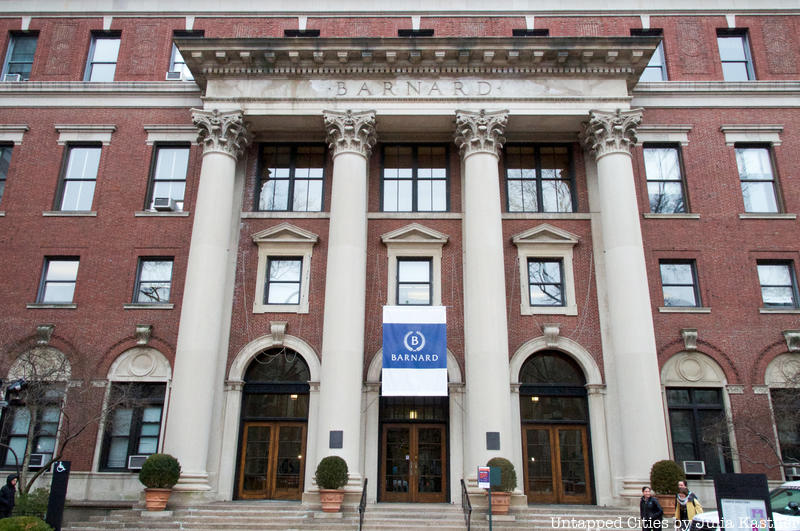
On April 1, 1889, the Board of Trustees of Columbia University voted to found Barnard College, which became the first college available to women in New York City. Columbia College’s long-time president, Frederick A. P. Barnard, was a strong supporter of co-education, and he had pressed upon the Columbia Board of Trustees to admit women for four consecutive annual reports from 1879-1882. The Board was not fully convinced, but it did set up a system for women to take the Columbia exams and earn a seal from the college. One young woman, Annie Nathan Meyer, was not satisfied by this arrangement.
Meyer was ambitious, largely self-taught, and, as of 1885, married to a doctor connected in New York’s society circles. She teamed up with Ella Weed, the principal of Miss Brown’s School for Girls, and put together a coalition of 50 leading New Yorkers, including ministers, businessmen and newspaper editors to pledge money for the college. She authored a lengthy essay in The Nation claiming that the lack of a women’s college was holding back New York City culturally.
In a savvy political move, she pushed for Columbia’s new women’s college to be named for Barnard, for his advocacy on behalf of co-education. Barnard died in 1889, and the school was indeed named for him. Barnard history professor Robert McCaughey has said that Frederick Barnard considered a women-only college “a defeat,” if meant a delay to co-education, but what could he do? “Separate but equal” was all the rage back then.
Lest anyone think Columbia College men were supportive of their new sister school, check out this welcoming op-ed from the Columbia Spectator:
“With this issue Barnard College makes her bow–we beg the young ladies’ pardon, her courtesy [curtsy]–to our readers. It is, for the present at least, our intention to make the news of our sister school a regular–and of course a pretty–department of our paper. In if the course of time, however, we find that our sister students, prepossessing and spirituelle though they be, are not interesting and alert, we shall indeed feel obliged to sacrifice their publicity to more pressing news! We shall, therefore, anxiously await from our correspondent the account of something ‘real naughty and shocking’ to keep alive interest. We should not like to suggest a love affair with a tutor; but if such an event came to pass spontaneously in the course of time, nothing could be further from our profession of impartiality than to restrain the news of it.”
The first Barnard class, 14 students, met at 343 Madison Avenue, but in 1898 the college opened at its current location on 118th and Broadway, across from Columbia. By 1900, Barnard had its own dean, faculty, and trustees, and had taken its place among the Seven Sister colleges, which include Bryn Mawr, Mt. Holyoke, Radcliffe (merged with Harvard in 1972), Smith, Vassar (went co-ed in 1969), and Wellesley.
By the early 1970s, every Ivy League school except Columbia had opened its doors to women or merged with a women’s college, and Columbia College’s all-male undergrad program also stood out in the university’s otherwise gender-integrated system. After considerable debate, however, Barnard chose to not merge with Columbia, and in 1982 Columbia College announced that it would admit women. Despite concerns over Barnard’s future once Columbia turned co-ed, the school remains selective and successful. Alums include Joan Rivers, Martha Stewart, Jeane Kirkpatrick and Anna Quindlen.
Read more from Today in NYC History on Untapped Cities and on janos.nyc





